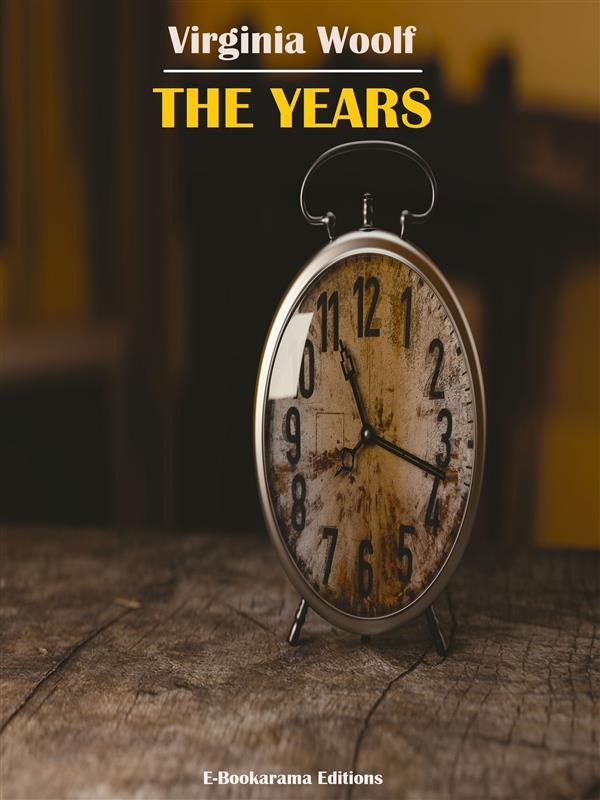
Sofort lieferbar (Download)
The most popular of Virginia Woolf's novels during her lifetime, first published in 1937, "The Years" is a savage indictment of British society at the turn of the century.
"The Years" is the story of three generations of the Pargiter family - their intimacies and estrangements, anxieties and triumphs - mapped out against the bustling rhythms of London's streets during the first decades of the twentieth century. Growing up in a typically Victorian household, the Pargiter children must learn to find their footing in an alternative world, where the rules of etiquette have shifted from the drawing-room to the air-raid shelter. A work of fluid and dazzling lucidity, "The Years" eschews a simple line of development in favour of a varied and constantly changing style, emphasises the radical discontinuity of personal experiences and historical events. Virginia Woolf's penultimate novel celebrates the resilience of the individual self and, in her dazzlingly fluid and distinctive voice, she confidently paints a broad canvas across time, generation and class.
Virginia Woolf (1882-1941) is regarded as a major 20th century author and essayist, a key figure in literary history as a feminist and modernist, and the centre of 'The Bloomsbury Group'. This informal collective of artists and writers which included Lytton Strachey and Roger Fry, exerted a powerful influence over early twentieth-century British culture. Between 1925 and 1931 Virginia Woolf produced what are now regarded as her finest masterpieces, from "Mrs Dalloway" (1925) to the poetic and highly experimental novel "The Waves" (1931). She also maintained an astonishing output of literary criticism, short fiction, journalism and biography, including the playfully subversive "Orlando" (1928) and "A Room of One's Own" (1929) a passionate feminist essay.
"The Years" is the story of three generations of the Pargiter family - their intimacies and estrangements, anxieties and triumphs - mapped out against the bustling rhythms of London's streets during the first decades of the twentieth century. Growing up in a typically Victorian household, the Pargiter children must learn to find their footing in an alternative world, where the rules of etiquette have shifted from the drawing-room to the air-raid shelter. A work of fluid and dazzling lucidity, "The Years" eschews a simple line of development in favour of a varied and constantly changing style, emphasises the radical discontinuity of personal experiences and historical events. Virginia Woolf's penultimate novel celebrates the resilience of the individual self and, in her dazzlingly fluid and distinctive voice, she confidently paints a broad canvas across time, generation and class.
Virginia Woolf (1882-1941) is regarded as a major 20th century author and essayist, a key figure in literary history as a feminist and modernist, and the centre of 'The Bloomsbury Group'. This informal collective of artists and writers which included Lytton Strachey and Roger Fry, exerted a powerful influence over early twentieth-century British culture. Between 1925 and 1931 Virginia Woolf produced what are now regarded as her finest masterpieces, from "Mrs Dalloway" (1925) to the poetic and highly experimental novel "The Waves" (1931). She also maintained an astonishing output of literary criticism, short fiction, journalism and biography, including the playfully subversive "Orlando" (1928) and "A Room of One's Own" (1929) a passionate feminist essay.
Produktdetails
Erscheinungsdatum
26. September 2024
Sprache
englisch
Dateigröße
1,29 MB
Altersempfehlung
ab 13 Jahre
Autor/Autorin
Virginia Woolf
Verlag/Hersteller
Kopierschutz
ohne Kopierschutz
Family Sharing
Ja
Produktart
EBOOK
Dateiformat
EPUB
ISBN
9788829547432
Entdecken Sie mehr
Bewertungen
0 Bewertungen
Es wurden noch keine Bewertungen abgegeben. Schreiben Sie die erste Bewertung zu "The Years" und helfen Sie damit anderen bei der Kaufentscheidung.









